The day you cannot go to McDonalds and consume their salads for fear of contracting a food borne infection is the day you should realize that there is something seriously wrong with what passes for the commercial food supply in the United States.
When foods that have been processed to the point where they are almost 100% artificial are unsafe to eat, it raises the question: What can we eat that will not lead to serious illness now as well as in a time of major crisis?
No matter whether you are concerned about the safety of non-perishable foods in your stockpile, or getting sick on foods that you think are safe, it is important to know as much as possible about safe food preparation. While mainstream media doesn’t want to address hazards associated with improper food growing and processing methods, they are things you must consider carefully regardless of the food source.
Find out our Firefather’s Time-Tested Natural Cures and Household Remedies
Here are some things you can do to stay safe regardless of what is going on with the commercial food supply or foods you grow on your own property.
How Bad is the Current Food Contamination Crisis?
In the last two weeks alone, major outbreaks of food borne illness have occurred or reoccurred in romaine lettuce, melons, and other foods that are usually consumed raw. Perhaps even more troubling are the recalls associated with foods that most people think are safe (from a pathogen perspective but not necessarily from a chemical one) because they are so heavily processed or they come from a well known source of fast food.
This includes:
- Chipotle – Even as I write this, there is still no confirmation of what pathogen caused over 700 people to get sick from eating at one Chipotle restaurant in Ohio[1]. To add insult to injury, there now two other restaurants in the same state where people are getting sick[2]. Over the last few years, there have been several food borne illnesses linked to Chipotle restaurants.
- Pepperidge Farm Goldfish Crackers – this one is a voluntary recall by the company out of concern that one of the ingredients used to manufacture the crackers was tainted with salmonella[3].
- As an update on the romaine lettuce and e.Coli situation[4], researchers now suspect that the infection stems from a large scale commercial cattle farm located in the area. Essentially, dust and debris from the farm has been running into a canal that is used by the romaine lettuce growers. This outbreak is just one of two pathogens that infected lettuce in salads in many stores and restaurants.
- Over 300 people in several states have been sicked by Cyclospora[5] contaminated salads from McDonalds. As with the e.Coli contamination, there are also other establishments involved including Trader Joe’s, Walgreens, and Kroger. Investigators are still trying to figure out where the disease comes from, however they have narrowed the field down to Fresh Express[6].
- Kellogg’s Honey Smacks – while this salmonella infection goes all the way back to June, there may still be boxes of contaminated cereal on the shelf and in homes[7].
- Ritz Crackers – there is also an active recall on Ritz Cracker Sandwiches because some of the whey powder in them may be contaminated with Salmonella. Given the number of products on supermarket shelves, and the size of this manufacturer, perhaps it would be best to avoid all products with this ingredient. One thing is for certain, whoever Ritz is getting their whey from is also likely to be supplying other food manufacturers. Do not forget that lower or “value priced” foods or generic label foods may also have ingredients from the same place that sell to more well known branded companies.
- Cut melons – honeydew, watermelon, and other pre-cut melon products distributed by Cato Foods, SpartanNash, and Gordon Food Service may all be contaminated with Salmonella. They have been sold in stores like Walmart, Kroger, Whole Food, Amazon, Costco, and Sprouts Farmer’s Market[8].
- Although raw turkey is not a “pre-cooked” or ready to eat product, it is also featuring heavily in news about food borne illness outbreaks. Interestingly enough, the raw turkey recall from July is listed as being at the “farm level”, and may have contaminated other food sources[9].
What About Growing Your Own Food?
While mainstream media never brings this up in connection with food borne illness, the fact remains that over 50% of all workers on farms or in the food production industry do not have permission from our government to be here[10]. It is not my intent to wade into the arena of immigration policy (although I have some very elegant and useful answers to this problem). Rather, I wish to point out that at least half the people on the farms and manufacturing facilities producing contaminated food are likely to be illegally in our country to begin with.
No matter whether you are concerned exclusively about food safety, or you feel strongly in favor of deporting people that do not have permission of our government to be here, your food purchasing choices matter as much as, if not more than your vote. As I have noted in other articles, however, there are far too many rules against growing food at home sustainably. It is up to you to vet candidates carefully and be sure to elect only individuals that will get rid of laws that chain you to commercial food and municipal water.
These concerns aside, there are also some things you need to be careful about when growing food at home so that you do not wind up with exposure to the same pathogens you are trying to get away from in the commercial food supply.
- In a home setting, it is very likely you will want to grow plants as close together using as few resources as possible. Without proper air flow around stems, leaves, fruits, and vegetables, you can rest assured that fungal, bacterial, and even viral pathogens will flourish. It does not matter whether the infection comes in from contaminated water, fertilizer, or your handling of the plants, the fact is these diseases may not be easy for you to detect until you get sick from consuming the plants.
- Salmonella, e.Coli and other food borne pathogens are actually very common in the soil. If you do not practice good hygiene while working with large numbers of plants, rest assured you will get sick. Never handle meat and growing plants at the same time. If you must work with both, scrub your hands and arms thoroughly, take a shower, and change your clothes. Your goal is to prevent cross contamination as much as possible.
- For several years now, I have been very interested in combining vertical gardening with methods that are similar to hydroponics and aeroponics. My goal is, and remains to be using less soil and less water without having to spend a fortune on special fertilizers, pumps, testing kits, and other items commonly used in hydroponics and aeroponics. While hydroponics is becoming more popular at the home level, it can also be very risky from a pathogen standpoint. Do not forget that the amount of water present in these systems combined with very little air circulation can spell disaster. If you are going to use these systems, make sure you know how to kill off likely pathogens in the food even if you would not normally concern yourself with these issues.
- Over the years, I have also had considerable interest in growing sprouts or micro greens. These tasty seedlings are over 4x more nutrient dense than young or full sized plants. They can also be ready to eat in just a few days and produce a good bit of biomass using very little in the way of resources. Unfortunately, they can also easily be a source of food borne illness if you don’t pay attention to the water changes and rinses. It is also very important to know how to cook sprouts or marinate them in vinegar or other herbs to kill off as much bacteria as possible.
- If you decide to raise animals for food, make sure that you are fully aware of how to manage diseases that they may transmit to you or the plants you are growing for food. As you can see, even a cattle farm located away from lettuce farms can spell disaster because of how easily bacteria like e.Coli can travel from place to place.
- With regard to compost, fish, and animal based fertilizers, you must always be careful about the pathogens they may bring to your plants. Make sure you know how to sterilize these items so that they are safe for use in close quarters. While decomposition may be a perfectly natural process, the situations you may find yourself growing food in may not have the ideal balance of airflow and natural pathogen predators to guarantee a safe food supply.
- Depending on how much you immerse in food production, you may also have an interest in insect farming, mushrooms and other fungi, and bacterial cultures used for fermentation. While insect farming is the easiest of the three alternative food production types, you must always be wary of infections and how to prevent them from making you sick. Remember, insects are often a vector that transport bacteria and other pathogens from one place to another. When you consume insects that have not been cooked or prepared properly, it can be very easy to get sick. Growing mushrooms and bacterial cultures also require a high degree of consideration for hygiene and proper setting. For example, when growing mushrooms, you must know how to safely remove the spores from the cap as well as how to recognize the signs of disease and infection in the fruits.
Time, Temperature, Pressure, and Food Flavor
If you love the taste of raw spinach and other fresh vegetables, but don’t like them cooked, it may make you even more unhappy about the current food borne disease outbreaks. Unfortunately, there is no way to make cooked foods taste the same as raw ones. As a result, you might as well focus on understanding the basics of cooking foods so that you get the most from your efforts.
Here are some things to keep in mind that will ensure your foods are cooked properly and maintain as much nutrition and flavor as possible:
- First, the foods must reach an internal temperature that will kill off pathogens of concern to you. In most cases, that temperature is between 165 and 212 degrees Fahrenheit. If you live in an area more than 500 feet above sea level, you will need to increase the cooking time to compensate for the reduction in temperature required to boil water or cook foods. If you want to increase the temperature to 212 degrees in these regions, you will have to use a pressure cooker.
- The amount of time that foods remain at a high temperature is also very important. While e.Coli will be neutralized in about one minute, other pathogens may take as much as 10 minutes to be destroyed. Today, many people that cook meat assume that it is ready to eat as soon as it reaches the proper internal temperature. Wait at least 10 minutes after the proper temperature is reached before cutting into the meat. You can also leave it in the oven with the heat shut off during this time period.
- When it comes to the flavor and nutritional value of vegetables, your best option will be to steam them. Even if you leave the food in the steamer for a few extra minutes, it won’t be as bad as over boiling, baking, or frying.
Contaminants That Can’t be Resolved with Cooking
As with water, there are more than a few things in the modern food supply that can’t be resolved by cooking. For example, no matter how much you cook foods that contain the bacteria that cause botulism, it will never make them safe to eat. In these cases, it is the toxic chemicals produced by the bacteria that are so deadly.
While you may not give it much thought, the dangerous food crisis in the United States is much worse than the occasional (but increasing) number of recalls related to pathogens and chemical based contamination. By this I mean mainstream media could easily introduce information about the dangers of GMOs and pesticides into stories about pathogens and other dangers to the food supply. When it comes right down to it, these chemical poisons are every bit as dangerous and should be of major concern to every consumer. While you can kill off bacteria and other pathogens in contaminated food, it may not be possible to remove these toxins.
Did you know that the organic food industry is growing at an exponential rate? As you stroll through the supermarket looking at those foods with double and triple sized price tags on them, you may be tempted to see if they really are safer and healthier to consume. Sadly, many organic food producers forge their documents and use all kinds of chemicals in the bargain. To add insult to injury, many “organic foods” of questionable nature come from China, Brazil, and India[11].
No matter how much the media tries to hide it, and no matter how much politicians refuse to address it by getting rid of laws that limit growing food at home, the only way for consumers in the United States to remain safe from these chemicals is to grow their own food. At the very least, when you use heirloom seeds and organic gardening methods, you will know exactly what you are consuming. The same goes for meat. When you raise your own animals, you can avoid being exposed to antibiotics, unnatural hormones and other chemicals used in the commercial meat industry. You will also avoid exposure to arsenic, chlorine, and radiation commonly used to kill pathogens in meat.
Spices that Kill Bacteria and Other Pathogens
Usually, when food borne outbreaks occur, we are constantly reminded to wash fruits and vegetables carefully before consuming them. Some people also recommend soaking fruits and vegetables for about 10 minutes in vinegar, or using food grade hydrogen peroxide[12]. Unfortunately, none of these methods will ensure that all harmful bacteria are killed off. Overall, you will find that vinegar is more effective than washing. Here are some herbs and natural remedies you should have on-hand for helping reduce bacterial, fungal, and viral pathogens found in food. Worst comes to worst, if you have no means to cook food, soaking your food or marinading them overnight along with these natural remedies may be better than nothing.
- Garlic – as you may be aware, garlic is one of the best herbs for curing bacterial, fungal, and viral infections. Not only has it been used for centuries for this purpose, it appears that pathogens are unable to develop an immunity to it. Unlike modern antibiotics, garlic and various pathogens have existed together for centuries, yet garlic can still kill these pathogens with relative ease[13].
- Honey – natural honey that hasn’t been processed will release hydrogen peroxide that can kill off bacteria. You can try mixing it with various foods or soaking them in it. As with garlic, there are no known cases of situations where bacteria have become immune to the effects of honey. [14]
- Turmeric – this is another very important herb for killing bacteria and other pathogens. Add some black pepper to increase the strength of the Turmeric. If at all possible, try soaking in a light oil because curcumin does not dissolve well in water.
- Coconut oil – as with garlic, this oil can kill off many kinds of bacteria, fungal, and viral infectious agents.
- Lemon juice – can also be used to kill bacteria.
- Rosemary – this herb actually has a fairly long history of usage as a disinfectant[15]. It can kill off viral, bacterial, and fungal pathogens. Along with thyme, Rosemary has a track record for killing off bacteria found in meat[16]. While it is always best to cook meat to a safe temperature, you can still try soaking meat in this and other herbs when nothing else is available. To get the most from these herbs, cut the meat into thin strips and soak them up to 48 hours, but not more than 96 hours under refrigeration. You will also need to explore different methods for ensuring that as much of the herb as possible is diffused into the meat.
Using Salt to Kill Germs in Food
When it comes to food storage and preservation methods, salt will kill off just about anything. There are several ways you can use salt to cure meat[17]. Just remember that the foods will still have to be cooked before consuming.
- As with using herbs to kill bacteria, you will have to use methods that are similar to making a marinade. In the case of salt, you will be covering the meat in salt and wrapping it in plastic for several days while under refrigeration. If the meat is fresh, do not forget to drain the blood and liquid from the bag as the salt dries it out. When preparing this meat for consumption, it is best to boil it since this will help leach out the salt.
- You can also use a solution of salt and water or “brine” to preserve the meat and kill germs. Store the meat in the refrigerator for several days while it is soaking. You can also inject the food with the salt water solution to speed up the process.
- In other cultures, it is not uncommon to consume fish, seafood, and even some forms of animal meat raw after it has been salted. It is best to consult people directly from those cultures about how they prepare the meat and what they look for in terms of safety precautions. Because commercial food animals are often raised in their own filth and in extremely cramped settings, it is not likely safe to eat their meat raw. By the same token, it is important to be wary of fish and seafood raised on similar kinds of “farms”.
Dehydrating Foods
Technically speaking, most pathogens require water in order to survive and replicate. If you completely remove moisture from foods, then they will no longer be able to support bacterial growth. Since drying or dehydrating foods isn’t considered cooking the food, it may be a viable option in a time of need.
Aside from using electric dehydrators, you can also make solar versions that can be used just about anywhere. In addition, if the situation is especially dire, placing the food in a hot car on a sunny day will also do the job. Just remember to leave the window open a crack so that moisture can escape.
No matter which device you use, preparing foods for dehydrating will involve the same basic steps. First, the food must be clean and sliced as thinly as possible. For meat and vegetables, you can cover them in salt for added drying and increased reduction in pathogens. You can also use sugar for fruits. In this situation, it will help preserve the fruit and will not increase the risk of contamination or spoilage later on.
Next, you will have to assemble the food so that air can circulate freely over, under, and around it. Most dehydrators come with racks that can be used for this purpose. If you made a solar dehydrator,or are using your car as a dehydrator, just about any cooling rack for baking will do the job. You can also prop the rack up with balls of tin foil or other materials in order to ensure more air flows under the food.
Once the foods are dried out, it is very important to handle them with care so that they do not become contaminated after the drying process. In all, this is the one part where most people are likely to have problems. Make sure all your utensils are clean and have been disinfected. Wear rubber gloves and make sure your hands are clean. Containers used to store the dried foods should also be clean and sterilized if possible. After the food has cooled off enough, use tongs to grab it and put it into the containers. Finally, seal up the containers and store in a cool, dry location.
Fermentation and Soaking in Grain Alcohol
In the United States, alcoholic beverages are usually seen as addictive, or “recreational” substances. This is distinctly different from European and other nations where alcoholic beverages are seen as a necessity to stave off water borne illnesses. While they may not use enough alcohol to cause impairment, it is entirely normal to put a little bit of alcohol in beverages in order to ensure all the germs are killed off.
Aside from using alcohol to kill infectious diseases in foods and beverages, it can also be used to keep medicinal herbs from becoming contaminated or spoiled. In fact, the making of medicinal wines is often a highly regarded skill in some families. These recipes are often handed down for generations while the wines themselves may be stored away for months to years with little loss in herbal potency.
Fermentation can be useful for preserving other kinds of food because it serves to remove glucose/sugar – the food source most commonly used by pathogens. For example, good quality cheeses made with the right bacterial cultures can be stored for months and years with little cause for concern over contamination. While it can take some work to learn how to maintain different fermentation cultures, you will find it well worth your while. Not only will you find it easier to produce good tasting foods with little or no cooking, they will also last longer and be safer than the hormone and chemical filled junk being sold in the stores today as “food”.
As you learn more about food storage and preparation, you may be wondering more about vacuum sealing and canning. While these and many other methods have their uses, they can also lead to botulism outbreaks if not done properly. On the other hand, the bacteria responsible for botulism cannot live in the kind of acidic environment created by lacto fermentation[18]. No matter whether you decide to make sauerkraut or other fermented fruits and vegetables, there is a good chance they will remain safe to eat as long as the food remains under the surface of the fermenting solution.
Each day, it seems like more stories emerge about food contaminated with deadly or dangerous food borne pathogens. When manufacturers of relatively non-perishable food like Ritz and Pepperidge Farms wind up with contaminated products, it can be very disconcerting. This is a good time to learn more about safe food production and preparation so that you can avoid health risks associated with the commercial food supply. It is also the best way to guarantee that your emergency or survival food stockpile will not wind up being filled with foods that aren’t safe because of various contaminants that weren’t discovered in a timely manner.
Resources
[1] https://www.businessinsider.com/chipotle-illness-outbreak-source-remains-a-mystery-2018-8
[2] http://www.wcbe.org/post/delaware-county-health-officials-investigating-illness-reports-two-other-chipotle-restaurants
[3] https://www.consumeraffairs.com/news/pepperidge-farm-recalls-four-varieties-of-goldfish-crackers-072618.html
[4] https://www.foodsafetynews.com/2018/08/cattle-feedlot-could-be-to-blame-for-e-coli-in-canal-water-used-on-romaine/
[5] https://www.abcactionnews.com/news/health/there-are-lots-of-food-recalls-due-to-outbreaks-right-now-heres-a-list-of-what-to-avoid
[6] https://www.foodsafetynews.com/2018/08/seeking-action-representative-presses-fda-for-answers-on-cyclospora-in-salad/
[7] https://www.cnn.com/2018/08/04/health/outbreaks-and-recalls-foods-not-to-eat/index.html
[8] https://baltimore.cbslocal.com/2018/07/14/fda-cut-melon-salmonella-maryland/
[9 https://www.washingtonpost.com/news/to-your-health/wp/2018/07/20/at-least-90-sickened-in-salmonella-outbreak-linked-to-raw-turkey-cdc-says/?utm_term=.68b1ed9baa81
[10] https://www.cbsnews.com/news/illegal-immigrants-us-economy-farm-workers-taxes/
[11] https://www.americanagriculturist.com/marketing/organic-labeling-fraud-booming
[12] http://www.stopthestomachflu.com/Home/what-is-the-best-way-to-wash-fruits-and-vegetables#TOC-What-has-more-bacteria-a-raw-chicken-breast-or-bagged-lettuce-
[13] https://food.ndtv.com/food-drinks/7-foods-that-fight-bacteria-and-kill-germs-naturally-1735704
[14] https://academic.oup.com/cid/article/46/11/1677/374749
[15] https://www.hgtv.com/design/make-and-celebrate/handmade/rosemary-lemon-all-purpose-cleaner
[16] https://www.ncbi.nlm.nih.gov/pmc/articles/PMC3958185/
[17] https://www.mortonsalt.com/article/meat-curing-methods/
[18] https://www.culturesforhealth.com/learn/natural-fermentation/lacto-fermentation-method-food-preservation/


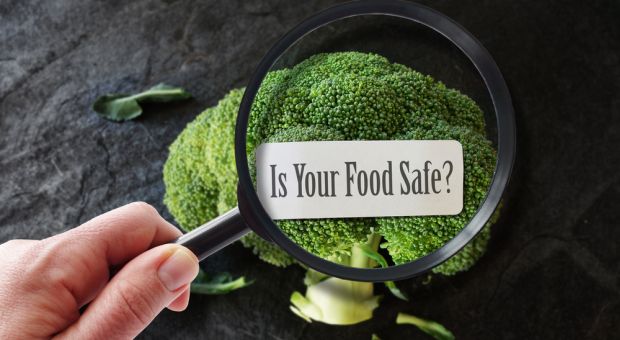

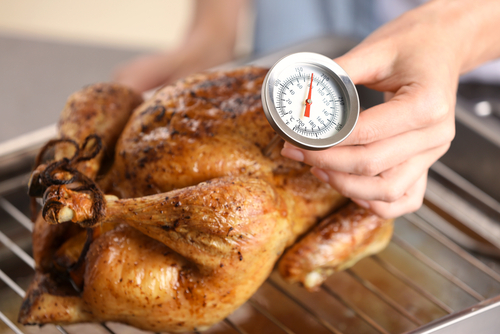
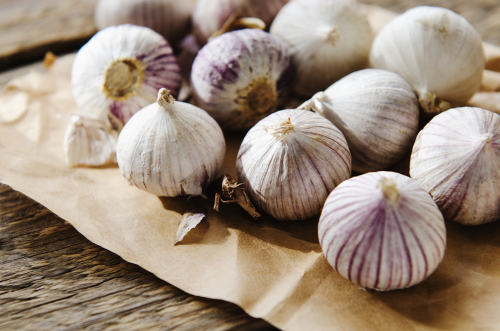
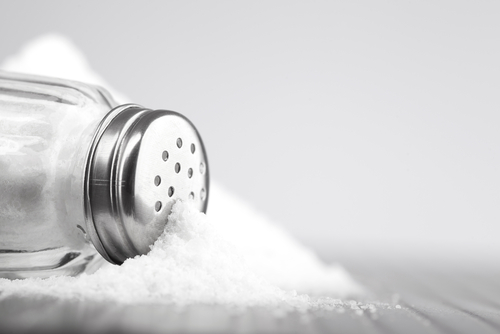
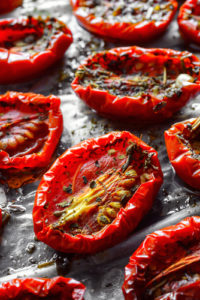
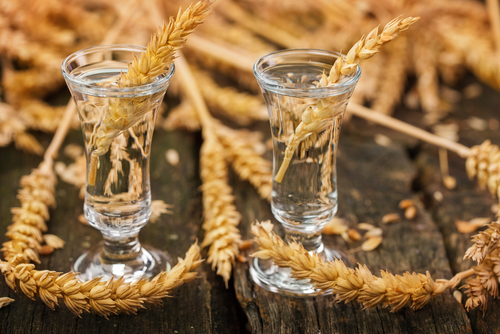


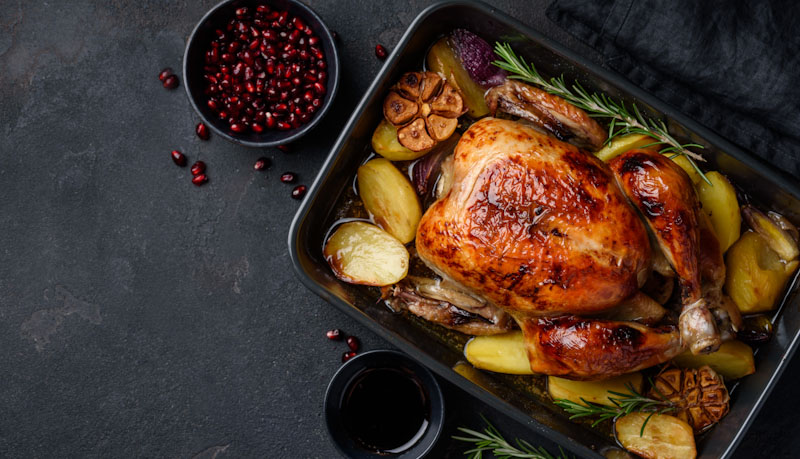
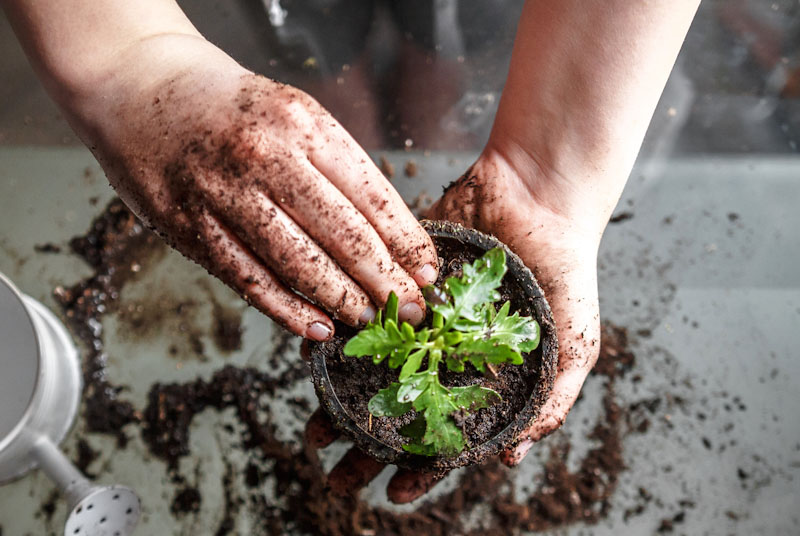
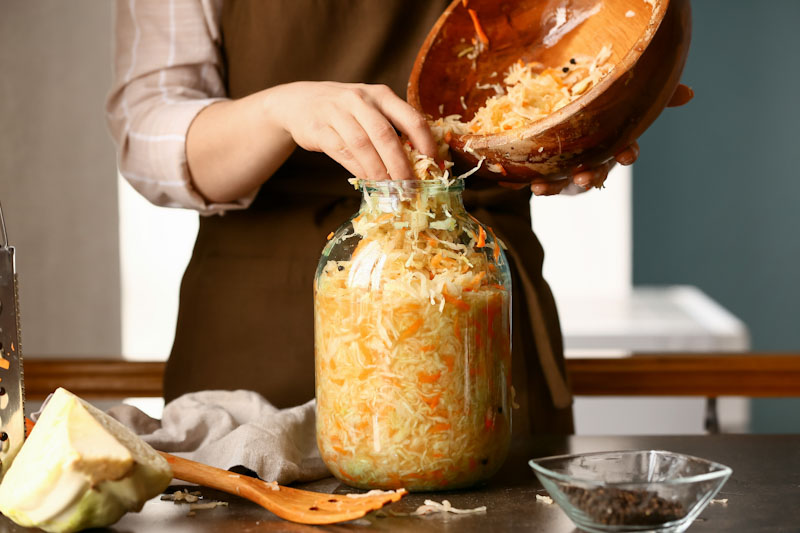


Bill in Idaho | August 16, 2018
|
Hello, Carmela. YOU Do some Really Good Work. You have provided some Great Articles in the past – But – I believe that this one is the TOP ONE ! In the First Section – you have some Really Important comments – Prepared Salads (Especially with Lettuce – Ugh!) and Cut Melons are Always Dangerous. In the Second Section – Growing your Own Food – ANYTIME you introduce Commercially prepared food products, etc. into your Compost -or- Mulch – You are playing Russian Roulette with your health! Your comments about Spices which can Kill Pathogens is R-e-a-l Important and Right on the Money. I Love your work – Keep doing what you do. Bill M.
Dennis Ferree | August 16, 2018
|
First let me say that a lot of this sickness is coming from the food processors, in order to cut down on their water bill when cleaning or washing off the , lettuce or spinich they reuse their water over,and over, the more they recycle the the water the more bacteria they pick up and, even the melons and cantalope should be taken home and washed in a mild soap solution before cutting into them, I personally even wash any leaf lettuce or spinich that I buy in the supermarket in a mild soap solution, just make sure you rinse it well and you will cut down on your contamination, , don’t put your life in those other fools hands , As for keeping cattle out of the garden the only reason being that they will eat half of what is in the garden. Farmers years ago used to take their manurea both cow amd chicken , and spread it in the gardens and no one ever got sick and it would grow nice vegetagles,. , as for meats whenever we would butcher a hog or steer or get a Deer, we would always scrubb the carcass out also with a mild soap solution and rinse it out real well. no-one ever got sick. so take your own precautions and don’t put your life in the fools hands.
John | August 16, 2018
|
Hi am getting the “please do not leach” again, when I try to download the article, when I use the “download as PDF”
leonard | August 17, 2018
|
copy and paste article into “word” and you have option to save as a pdf
Here in Minnesota | August 30, 2018
|
With regards to botulism, all is not lost. Check this site: https://ucanr.edu/sites/MFPOC/Food_Safety/Botulism/
Certainly there are risks. However, in a food-insecure situation, boiling the food may have to do. Read esp. the comments from CDC.
Thomas | July 28, 2019
|
you need to refine your statement re. botulism. the toxin can be destroyed by cooking, as can the bacterium. but the spore cannot
red | July 29, 2019
|
I worked at some very expensive Eastern restaurants over the years. When the chef called for a lot of rosemary, we didn’t eat that item. Rosemary counteracts food poisoning. We were raised on home-canned, dried, and did our own butchering, so food safety was paramount. Just in case of a problem, our remedy is 1 level teaspoon dried rosemary leaves in a cup, and no more than that. Cover with boiling water, cover cup and steep for 10 minutes. Sip it. If the sickness persists in for more than an hour longer than you finished the tea, make a second but do not make a third cup. Dad said in WWII, he had rosemary chicken in Germany but never ate it in Europe again. No, he didn’t get sick, but the cooks bled the chickens and hung them by the tail feathers in the attic to age. When the chicken dropped, it was aged. Then they cleaned it. I used to air-age beef, but always cut off the dried parts before cooking. Air-aged is, kill the beef, then hang it covered in canvas in a tree (this is Arizona and problems in the wild are rare). It aged well, within days, and kept well. But, there was always a large can of rosemary around, as well, just in case.